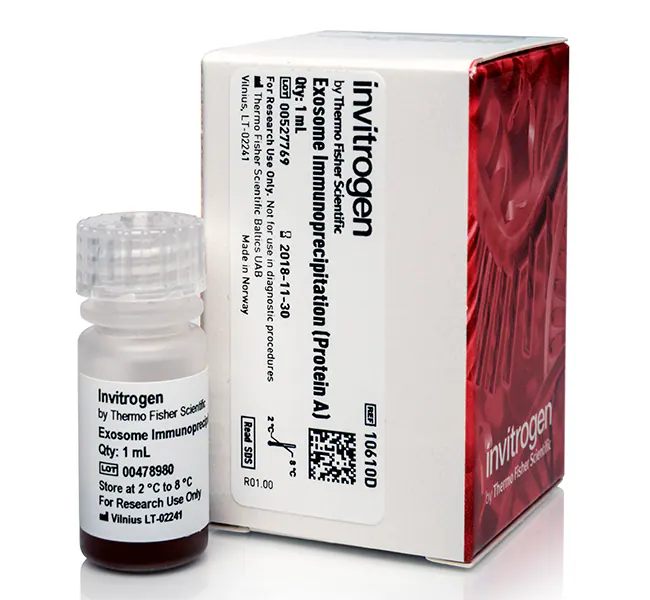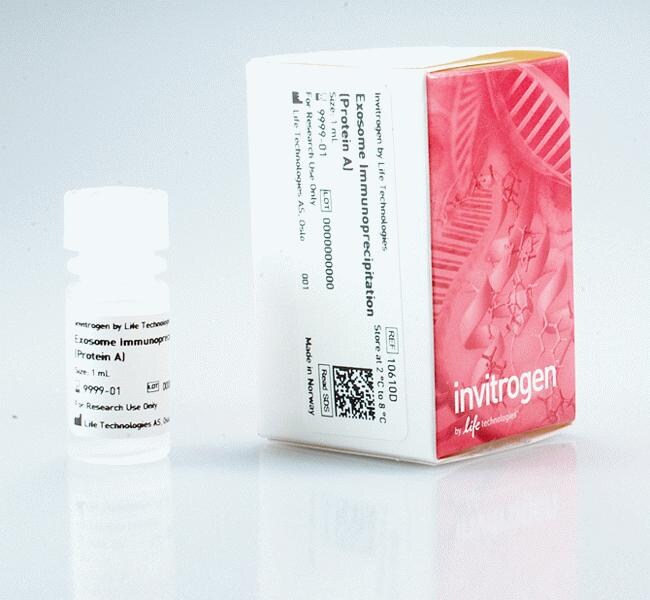
Exosome Immunoprecipitation Reagent (Protein A) enables fast and gentle magnetic isolation of exosomal proteins, causing minimal physical stress to the target protein and allowing comparison of multiple samples on the same gel.
• Maintain intact exosome protein complexes
• Reduce background significantly—low non-specific binding
• Fast protocol time—only 30 minutes
• Maximal comparison—ultra-sensitivity allows many samples on the same gel
Dynabeads™ coupled to Protein A are widely used for immunoprecipitation (IP), chromatin immunoprecipitation (ChIP), and protein isolation. The magnetic properties of Dynabeads™ makes them a superior alternative to sepharose or agarose slurry for immunoprecipitation, since magnetic separation technology is faster and gentler than other methods, causing minimal physical stress to the target proteins. This permits the isolation and concentration of labile composites that might otherwise dissociate or be damaged by proteases during long incubation times. Native protein conformation and intact, large protein complexes will be preserved.
Exosome Immunoprecipitation (Protein A) makes use of Dynabeads™ Protein A for antibody binding and subsequent immunoprecipitation of exosomal proteins. Antibody is added to the Dynabeads™ suspension where binding occurs via the Fc-region of the antibody. The mixture is then placed near a magnet, causing the beads migrate to the side of the tube, allowing easy removal of the supernatant. The bead-bound antibody can now be used for immunoprecipitation of exosomal proteins. Immunoprecipitation allows a 10 to 50 times concentration of exosomal proteins prior to protein analysis, such as Western blotting.
The amount of Ig captured by Exosome Immunoprecipitation(Protein A) is dependent on the concentration of Ig in the starting sample. The binding capacity is approximately 240 ug human Ig per mL beads.
For isolation of Ig via protein G, we recommend the Exosome Immunoprecipitation (Protein G).
| Code | Description |
|---|---|
| 10610D | Catalog Number: 10610D |


